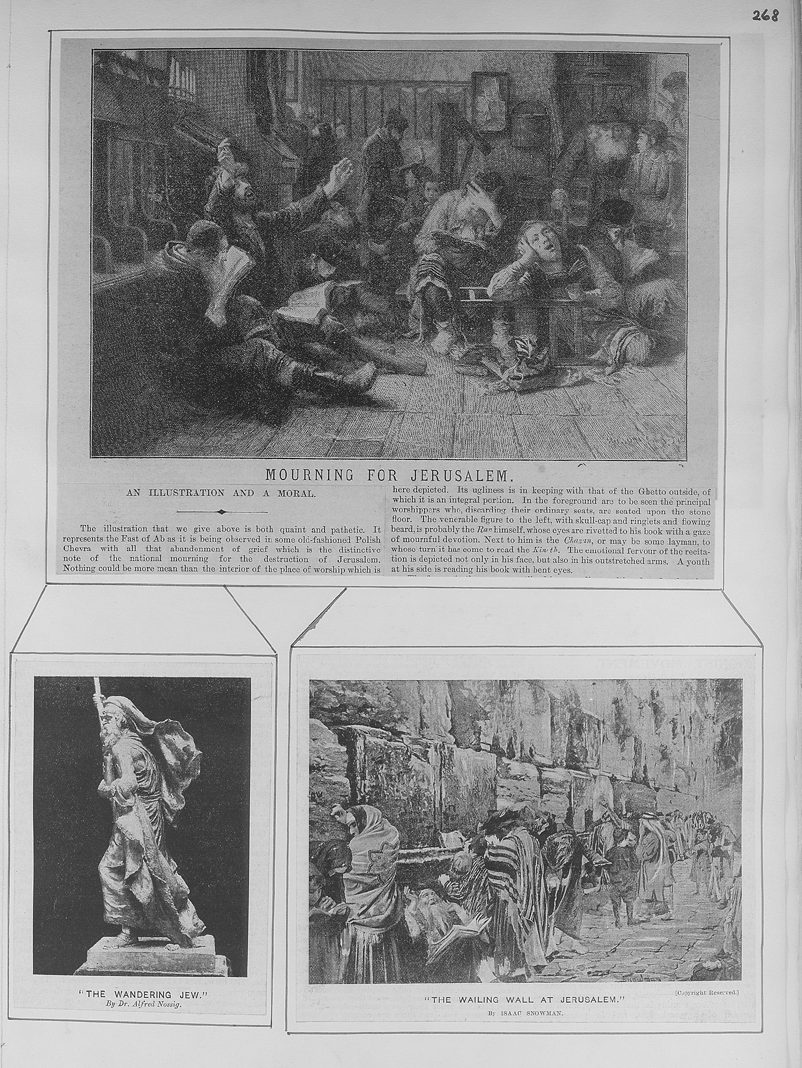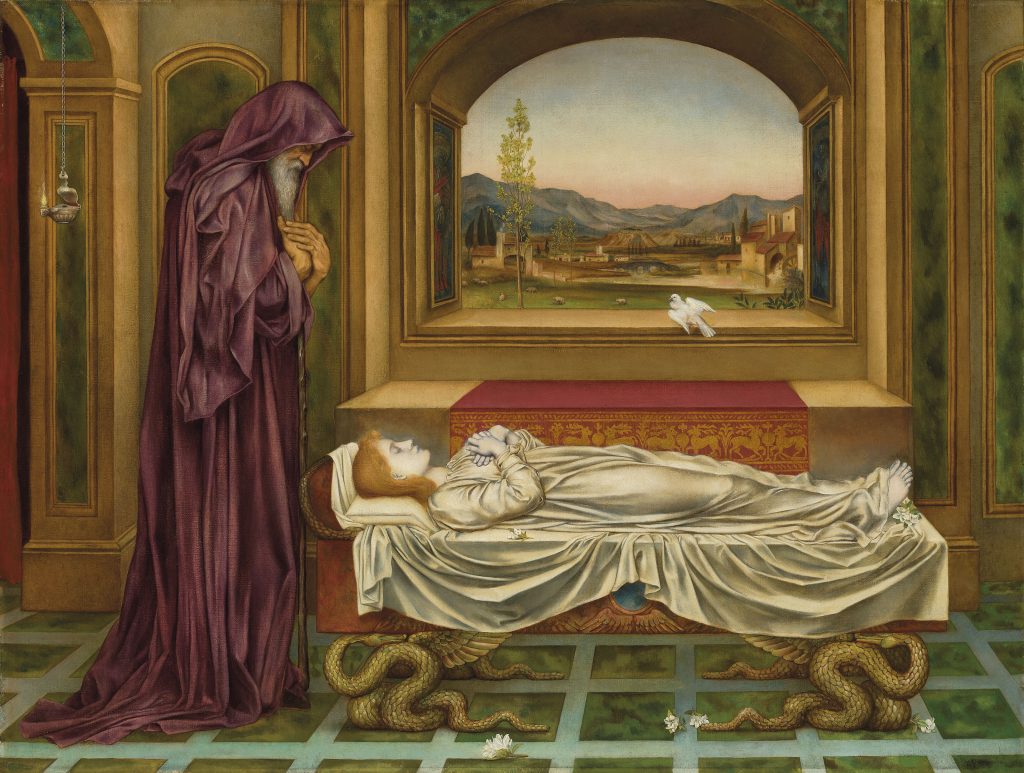Whilst some Jewish writers and artists used the Wandering Jew to understand and express their own plight, others rewrote the legend to reject its antisemitic origins. They reframed it as an instrument for cultural cohesion and tolerance, and to understand their Jewish or mixed identities in a wider European context.
Heinrich Heine (1797-1856, Germany) was born into a Jewish family but converted to Christianity in hope of assimilation. ‘Jehuda ben Halevy’ (1851), a poem about the medieval Sephardi Rabbi, explores the Jewish diaspora in Germany and its literary heritage. Halevy meets the Wandering Jew who “held a thousand years of sorrow / and he sighed ‘Jerusalem’.”8 Heine reshapes the legend to express the Wandering Jew’s pain at the loss of his homeland, not due to the punishment from Jesus.
“Such an interesting,
strange pilgrim Must the man have been; his eyes
Peered out from a
thousand years of
Gloom. He sighed,
‘Jerusalem’.”
Heinrich Heine
‘Jehuda ben Halevy’, 1851

London Jewish Museum, C 1997.1.p268.
Similarly, Edmond Fleg (1874-1963, Switzerland), was raised in an Alsatian family who understood their Jewishness through the ideas of the French Revolution: liberty, equality, fraternity. His 1933 novel Jésus: raconté par le Juif errant incorporates this context to present the legend. The Wandering Jew retells his origin story, as witness to Jesus, speaking of shared past and future suffering.
The Nazarene (1930) by Sholem Asch (1880-1957, Poland) was met with controversy, with the Jewish author being accused of converting to Christianity. Instead of focussing on the Wandering Jew’s power of eternal memory, Asch employs the gilgul, a belief in the reincarnation of souls from Jewish Kabbalah: “Not the power to remember, but it’s very opposite, the power to forget, is a necessary condition of our existence”9. Set in 1930s Warsaw, the novel features an encounter between a Christian and a Jew, both reincarnated from the time of the Second Temple, to advance interfaith cooperation.
Avant-garde poet Mina Loy (1882-1966, England) alludes to the Wandering Jew to understand the racial difference she inherited from her Jewish father. She plays with ideas of Jewish cosmopolitanism, errancy and immortality in the long poem ‘Anglo- Mongrels and the Rose’ (1923) and the unfinished novel Goy Israels (1930).
